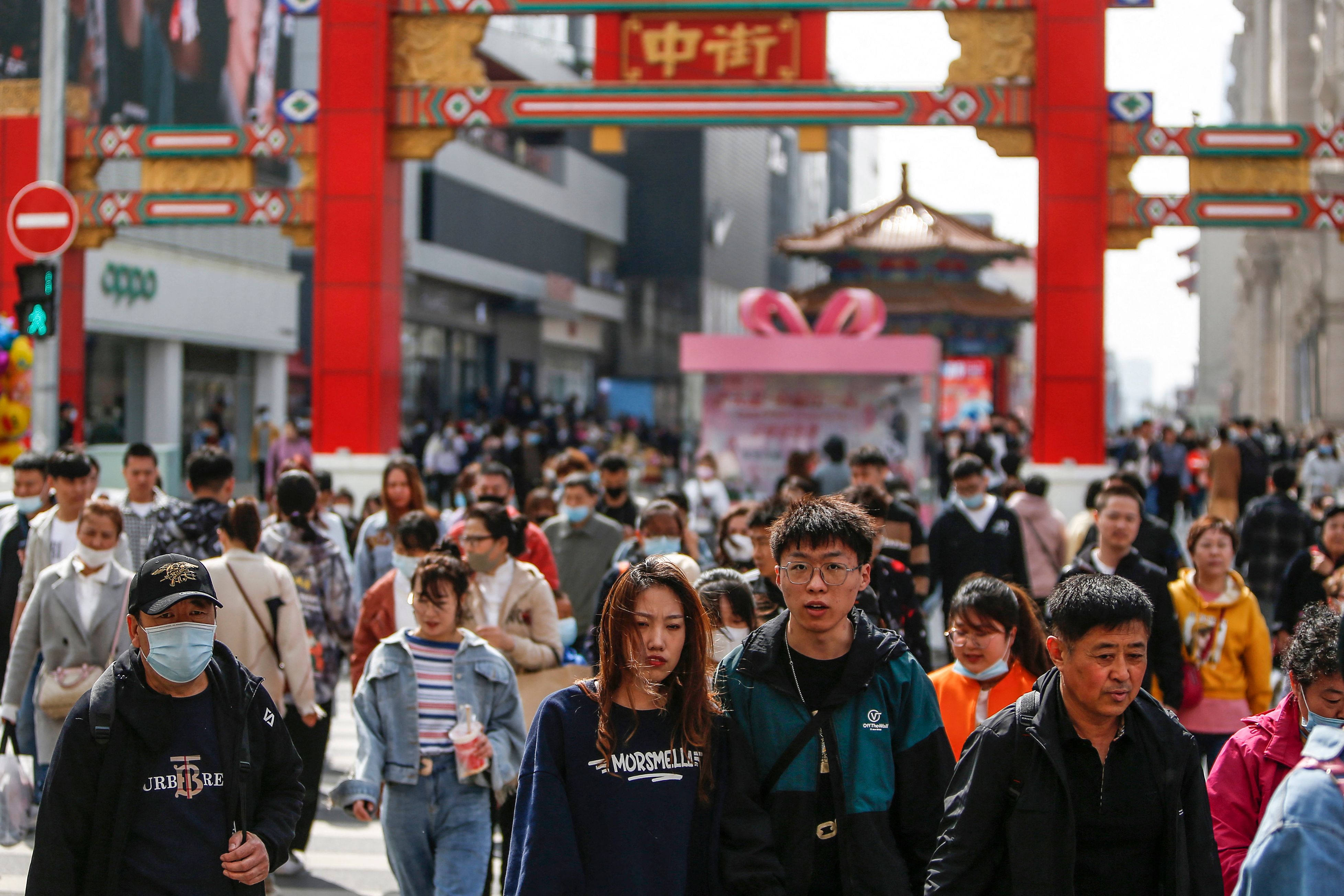China census results show demographic crisis closer at hand and more serious: Experts
Sign up now: Get insights on Asia's fast-moving developments

The mainland population in China registered its lowest growth rate on record in the past decade.
PHOTO: AFP
Follow topic:
BEIJING - China's demographic crisis could be closer at hand and more serious than previously thought, judging by the latest census results.
The mainland population registered its lowest growth rate on record in the past decade, increasing by 5.38 per cent and bringing the total population to 1.412 billion in 2020, results from the once-in-a-decade census showed on Tuesday (May 11).
The growth rate was the lowest registered in all of the country's seven previous official population surveys, dating to 1953.
During the previous census in 2010, the population rose 5.84 per cent to 1.34 billion. The rise was in double digits in all surveys before 2010.
The National Bureau of Statistics commissioner Ning Jizhe told a news briefing on Tuesday that the average annual population growth rate from 2011 to 2020 fell to 0.53 per cent, down 0.04 percentage points from the 2001-2010 period, the lowest average annual growth rate on record.
In addition, the number of births continued its downward trend last year despite government efforts to encourage couples to have more children. China put in place a two-child limit in 2016 when it replaced the one-child policy.
Mr Ning said that there were 12 million births last year, and the country's fertility rate was 1.3.
This is far lower than the 18 million and 17 million births registered in 2016 and 2017 respectively after the decades-long one-child policy was abolished.
"That is a very natural result of China's economic and social development, especially in the process of industrialisation and urbanisation," said Mr Ning.
Calling this "a challenge" for China, he cited several factors for the drop in births and they include the decline in women of childbearing age, postponement of childbearing and the rising cost of having children.
The Covid-19 crisis last year had also created uncertainties and dampened people's willingness to have children, he added.
Mr Ning said that the decline in the working age population showed that China needed to adjust its economic structure and tap on science and technology to boost productivity.
The figures also meant that Beijing missed the target it set in 2016 to raise its population to 1.42 billion by 2020 and experts said they were a clear indication that China was grappling with a double whammy of a rapidly ageing population amid declining birth rates.
Conducted once every decade, the latest population survey was done in November and December last year. The results were initially supposed to be released early last month but this was delayed, sparking discussion over whether there were issues over the data.
The Financial Times said late last month that Beijing would report its first population decline since the disastrous Great Leap Forward campaign between 1958 and 1962, which experts said left tens of millions dead of starvation. The NBS refuted this days later when it issued a one-line statement saying the population had increased last year.
The new data from the latest census will be closely watched. Policy planners, in particular, use it to determine allocation of resources, such as whether schools or retirement homes should be built.
Dr Huang Wenzheng, a population expert at the Centre for China and Globalisation, a Beijing-based think-tank, said the demographic crisis was more serious than anticipated.
He pointed out that despite the one-child policy being relaxed in 2016, births plummeted to 12 million last year.
China's population was widely expected to peak in 2027, but Dr Huang said this could come earlier.
"We could be looking at negative growth rates by 2024 or 2025," he said, adding that the country needed to further relax child limits as an immediate first step.
The Economist Intelligence Unit's principal economist, Ms Yue Su, said China would still retain "a certain degree of advantage" over other developed Asian economies such as South Korea, as the pace of ageing in the country was still slower than the others.
Ms Su said the "working age population" (age 15 to 64) is expected to drop to 923 million by 2030, from 995.9 million in 2018. This trend would put a cap on China's potential economic growth, she said.
"The demographic dividend that propelled the country's economic rise over recent decades is set to dissipate quickly. These demographic headwinds create a powerful incentive to introduce productivity-enhancing reforms," she added.
The census also showed how migration trends in China had prevailed - with the population in the wealthier eastern provinces increasing by 2.15 percentage points.
In particular, the Liaoning, Jilin and Heilongjiang rust belt provinces in the north-east, have seen their populations decrease by 1.2 percentage points, indicating that workers there were still seeking to move elsewhere despite government efforts to revitalise those areas and restructure the provincial economies.

